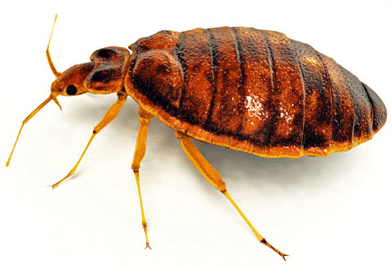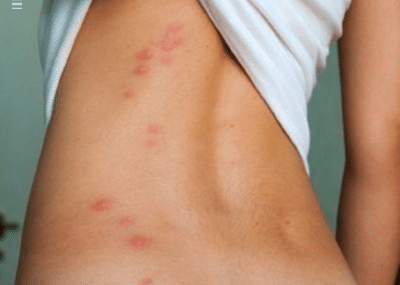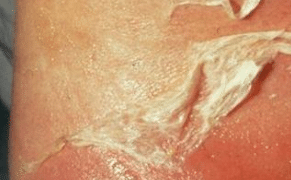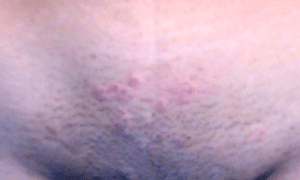Where do bedbugs come from? A critical look at where do the bed bugs come from, causes, pictures, how they look like, and how to get rid of them.

where do bed bugs come from
Where do Bed Bugs Come From?
As the name suggests, bed bugs are normally found in the close proximity of the beds. They are mostly attracted to and also feed on the warm-blooded animals so as to survive. This might be the humans or even animals, but little is understood on what leads to bed bugs to have a preference for people.
To feed on the humans, bed bugs would want a very close proximity to the host. Box springs, headboards as well as bed framing are the most favorite harborage sites for the pests. They can as well settle into the furniture including the fixtures that are very close to a bed.
Bedrooms are just some of the places where bed bugs may be a concern though. Where do bed bugs come from? Bed bugs are the consummate hitchhikers. Thus, they are basically moved by people and human belongings such as the suitcases.
If bed bugs or even the evidence of bed bugs are found out, then you should leave the area and call a pest management professional to help.
Bed bugs can move to all other areas that they are disturbed. This can lead to other areas to be heavily infested which can be much difficult to inspect or even treat.
Where do bed bugs come from? Bedbugs are active normally at night and bite people when we are sleeping. They usually feed by piercing the skin and then withdrawing then blood using an elongated beak. The bugs then feed from four to fifteen minutes so as to become engorged and then crawl away much unnoticed.
Most of the bedbug bites are much painless at first, but they later turn into very itchy welts. Unlike flea bites that are usually around the ankles, bedbug bites are on any skin spot exposed during sleep. Also, the bites do not have a red spot in the center like the ones done by the flea bites.
People who don’t understand that they have a bedbug infestation can mostly attribute the itching and also the welts to other causes, like the mosquitoes. To confirm the bedbug bites, you should find and identify the bugs themselves.
What Causes Bed bugs
Where do bed bugs come from? Bedbugs are normally found in temperate as well as the tropical climates worldwide. They are most mostly found in the living quarters where their host especially people resides.
Bedbugs usually hide in the seams as well as the crevices of the mattresses and the box springs, headboards, and in spaces below baseboards or even behind the loose wallpaper. Clutter and also disarray also give additional hiding places for the bedbugs. Bedbugs can be transported from one place to another through the luggage, clothing, and also used mattresses. Although they are normally associated to unsanitary living conditions, the bedbug infestations also happen in a very clean, well-maintained living quarters, including the five-star hotels as well as resorts.
Bedbug infestations have in the recent past been increasingly reported in hotels, apartments, jails, nursing homes, dormitories and hospitals. There have been many cases reported in the U.S. which involves litigation due to the bedbug infestations.
Before the World War II, bedbug infestations were very common; but, after the widespread introduction of the application of the insecticide DDT, bedbug infestations reduced and became much less common. The recent resurgence in the bedbug infestations globally is said to be related to many different factors, such as the increase in international travel, insecticide resistance, and ineffective pest-control measures.
Once in the home, bed bugs may scurry very fast to a new hiding place: usually behind the baseboards, under wallpaper, inside the switch plates, or even in furniture seams. Then it’s just a matter of time before they start to multiply.
One female can arrive at the doorstep when already having enough eggs to lead to hundreds more offspring. And while filth does not have any importance to bed bugs in any way, the clutter does. The more cluttered the home, the increased number of hiding places for the bed bugs, and the harder it will be to do away with them.
Where do bed bugs come from? Because bed bugs normally travel by hitchhiking, infestations are very common in places that has high rates of bed bugs turnover amongst the human population: apartment buildings, homeless shelters, hotels and also the military barracks.
Any time you’ve got several people coming and going, there’s an increased risk that a person will carry a few number of bed bugs into the building. In general therefore, bed bugs are usually transported within luggage, thus allowing them to spread to any places that humans settle. Because of their small size as well as propensity to hide within the mattresses and also the furniture, controlling a bed bug infestation might prove to be very difficult.
The presence of only a single fertile female bed bug that is staying in a friendly environment like a single or multiple family dwelling is an infestation that is already waiting to occur.
Since a healthy, blood-fed female bed bug may produce from 300-500 healthy eggs during her lifetime and can also lay from 3-7 eggs per day, the likelihood of an infestation of the bed bugs is very high unless the bed bug control efforts by the pest management professional are used to get rid of the infestation.
Where do Bed bugs Hide

bedbugs bite picture
- Prefers dark, undisturbed areas that are mostly near host
- Hides in the crevices of the furniture as well as the baseboards near beds
- Is normally attracted by the carbon dioxide as well as the warmth that humans emit
- Being active at night time; not normally seen in light, more especially when few in number
- A potential problem in the dwellings that has a high turnover (e.g. the hotels as well as the motels)
- Ability to move to several rooms in the multi-unit buildings
- Normally brought in on the luggage or even used furniture
Bedbugs are the small, nocturnal, wingless insects belonging to the insect family of Cimicidae. They feed on humans and other warm blooded animals. They are an oval shape and are up to 4-5 mm long when fully grown.
Adult bed bugs appears to have a flattened body and also their skin colour is either rust brown or even a deeper red brown. Nymph bed bugs are very clear or sometimes a yellowish colour and are usually about 3 mm long. Bed bugs have two antennae and also have six legs.
Where do bed bugs come from? Bed bugs have been known for long period of time to travel over 25 feet from hiding so as to feed but can generally hide within the 6 feet of their host.
Due to their flattened body, they can easily hide in smaller places like the baseboards, under carpets, behind loose wallpaper, sofas, behind the picture frames and several other places which makes them much difficult to detect. They also tend to stay together and large infestations normally give off a sweet but very unpleasant smell.
How do Bed Bugs Look Like
- Has seen a resurgence over the past few years
- Adults are about 4 to 6 mm long, which is the size of an apple seed
- Does not have wings; does not fly
- Colored red brown, having abdomen darker as the blood is digested
- Males have a much more tapered abdomen than the females
- Reaction to the bites vary from one person to another, ranging from none to mild to severe
Signs of Bed bugs
If you wake up having itchy skin spots you didn’t have when you went to bed, then you may have bedbugs, especially if you bought a used bed or any other used furniture around the time of the bites started. Other indications that you have bedbugs are:
- Blood stains on the sheets or even the pillowcases
- Dark spots of the bedbug excrement on the sheets and mattresses, and walls
- Bedbug fecal spots, or shed skins in places where bedbugs hide
- An offensive, musty odor that emanates from the bugs’ scent glands
If you suspect any form of infestation, get rid of all bedding and check them carefully for any indications of the bugs or even their excrement. Do away with the dust cover over the bottom of the box springs and carefully examine the seams of the wood framing. Peel back the fabric where it is stapled to the wood frame.
Also, check the place around the bed, including the inside books or radios, and even in electrical outlets. Check the closet, as bedbugs might attach to the clothing. If you are not sure about the signs of bedbugs, then you should call an exterminator, who will understand what to look for.
How to Get Rid of Bedbugs

how to get rid of bed bugs
- Recognize signs of bedbug infestation. You more likely understand a bedbug infestation by a rash that usually looks like a mosquito bite. Most often these appears at night but in a serious infestation they can happen during the day. A bedbug bite unlike the mosquito bite normally swells and then spreads out. Also the bites may come in several lines and can also burn unlike a mosquito bite. A mosquito bite stays round and is neat looking.
- Watch for other indications of bedbugs. Things to look for are the bed bugs themselves and the light-brown, molted skins of the nymphs. Dark spots of the dried bed bug excrement are normally found along mattress seams or wherever the bugs have once resided. There’s also a smell of the rotten raspberries, or even dried blood.
- Don’t let the name fool you. Bedbugs are able to be found any place that people rest and lounge and even the nearby. Bedbugs are also able to be found under school desks, on computers in the library, the chairs and curtains or even on a store wall. The same goes for the carpets. Many times a brush that is against a wall in on infested area may cause bedbugs in the home. Transportation hubs like the airports and bus terminals are also some of the infestation stations to be wary of. They may also cling to the curtain rods, fans and also inside the electronics.
- Don’t believe the stereotype that the bedbugs happen in only the poor dirty houses. Many of the affluent communities and also households also have the bedbug problems. Most of the business trips to the airports and to the companies themselves have had bedbug infestations.
Finding the Bed Bugs
- Dismantle the bed and stand the components on the end. Oftentimes, the gauze fabric that is underneath the bed should be removed to gain access for an inspection and also possible treatment. Cracks as well as crevices of the bed frames should be carefully examined, more especially if the frame is wooden
- Successful treatment of the mattresses is difficult and infested components may be required to be discarded.
- Bed bugs also hide amongst the items that are stored underneath beds.
- Empty nightstands as well as dressers. Examine them carefully, then tip them over so as to inspect the woodwork that is underneath. Sometimes, the bugs can be hiding in the cracks, corners as well as the recesses.
- Check the upholstered chairs. Pay close attention to the seams and crevices that is beneath the cushions. Sofas might be bed bug hotspots especially when used for sleeping.
- Check other common places. These include along and also under the edge of wall-to-wall carpeting, cracks in wood molding and ceiling-wall junctures. Bed bugs tend to congregate in some areas, but it is very common to find an individual or even some eggs that are scattered in several places.
- Use a flashlight. Inspectors may sometimes inject a pyrethrum-based “flushing agent” into the crevices so as to assist reveal where the bugs might be hiding.
Treating and Controlling Bed Bugs
- Follow an integrated pest management (IPM) approach. This involves multiple tactics like preventive measures, and also the chemicals applied to targeted sites.
- Bag and launder affected items. Smaller items that may not be laundered can sometimes be de-infested through heating. Individual items, for instance, might be wrapped in the plastic and then placed in a hot, sunny location for at least a few days.
Bedbugs also succumb to the cold temperatures that are below freezing, but the chilling period of time must be maintained for at least three weeks. Attempts to do away with an entire apartment of bed bugs by raising or even lowering the thermostat can be entirely unsuccessful.
- Wash all the linen on hot, dry on a hot setting. Gather all the linen and leather bags, mattress covers, teddy bears etc. Machine wash and hot – wash the laundry bag also. Tumble dry on the hot. Steam usually gets rid of the bed bugs.
Some of the metropolitan areas provide bed bug laundry and also dry cleaning services which have the added benefits of proven methods for getting rid of the bed bugs and also bagging or even storing the cleaned items so that they are not become re-infested while the home is still being exterminated.
-
- If something cannot be washed or discarded (such as a valuable leather purse) spray with non-toxic bed bug spray (such as diatomaceous earth), seal in a plastic bag and leave for a few months.
- Point steam on them. You can get a simple device that is capable of generating steam at the local hardware store. You can also convert the home electric kettle to a steam machine by also attaching a very flexible tube. Steam should get rid of all bedbugs and also the eggs. Thoroughly spray the steam at all the corners and also the seams.
- Vacuum the house. This can get rid of the bugs and eggs from mattresses, walls and other surfaces. Pay a closer attention to the seams, and the edges of the mattresses and also the box springs, including the perimeter edge of the wall-to-wall carpets. Then, dispose off the vacuum contents that are in a sealed trash bag. Steam cleaning of the house hold items is also vital for killing of the bugs and eggs that vacuuming might have missed.
- Repair cracks in plaster and glue down loosened wallpaper so to get rid of the bed bug harborage areas. Get rid and do away with wild animal roosts and also bird nests when possible.
- Consider use of insecticides. Residual insecticides (normally the pyrethroids) are used as spot treatments to the cracks where bed bugs are hiding.
Increased penetration of the insecticide into the cracks may be achieved if the accumulated dirt are first removed by use of a vacuum cleaner. Most of the readily available aerosol pesticide sprays can lead to bed bugs to scatter thus making eradication very difficult. Dust formulations can be used to treat the wall voids and attics.
- Repeat the insecticide applications if bed bugs are available for about three weeks after the initial treatment. It is very difficult to find all the hiding places and also the hidden eggs might have hatched.
- Beware of the insecticide programs in the local stores which might be unnecessarily messy or even toxic. Most of the programs are also not very much potent at all and might be a money pit.
- Enlist the services of a professional pest control firm. Experienced companies understand where to search for bed bugs, and also have an assortment of management tools at their disposal. Owners as well as the occupants will need to assist the professional in very crucial ways. Allowing the access for an inspection as well as the treatment is very crucial essential and excess clutter is supposed to be removed.
- Discard affected items. In some of the cases, infested mattresses as well as the box springs will require to be discarded. Since the bed bugs may disperse throughout the building, it also can be vital to inspect the adjoining rooms and also the apartments.
Bedbugs Pictures
Further references;
- Dealing with Bed Bugs: http://mattresshelp.org/bed-bugs/
- What Causes Bed Bugs: http://insects.about.com/od/truebugs/f/what-causes-bed-bugs.htm
- Bed Bug Infestation: http://www.orkin.com/other/bed-bugs/bed-bug-infestation/
- Bedbugs: http://www.webmd.com/skin-problems-and-treatments/guide/bedbugs-infestation#2
- How to Get Rid of Bed Bugs: http://www.wikihow.com/Get-Rid-of-Bed-Bugs
- Getting Rid Of Bed Bugs – How To Kill Bed Bugs: http://www.doyourownpestcontrol.com/bed-bugs.htm
- BED BUGS: http://www.orkincanada.ca/bed-bugs/
- Bedbugs: http://www.emedicinehealth.com/bedbugs/page2_em.htm









